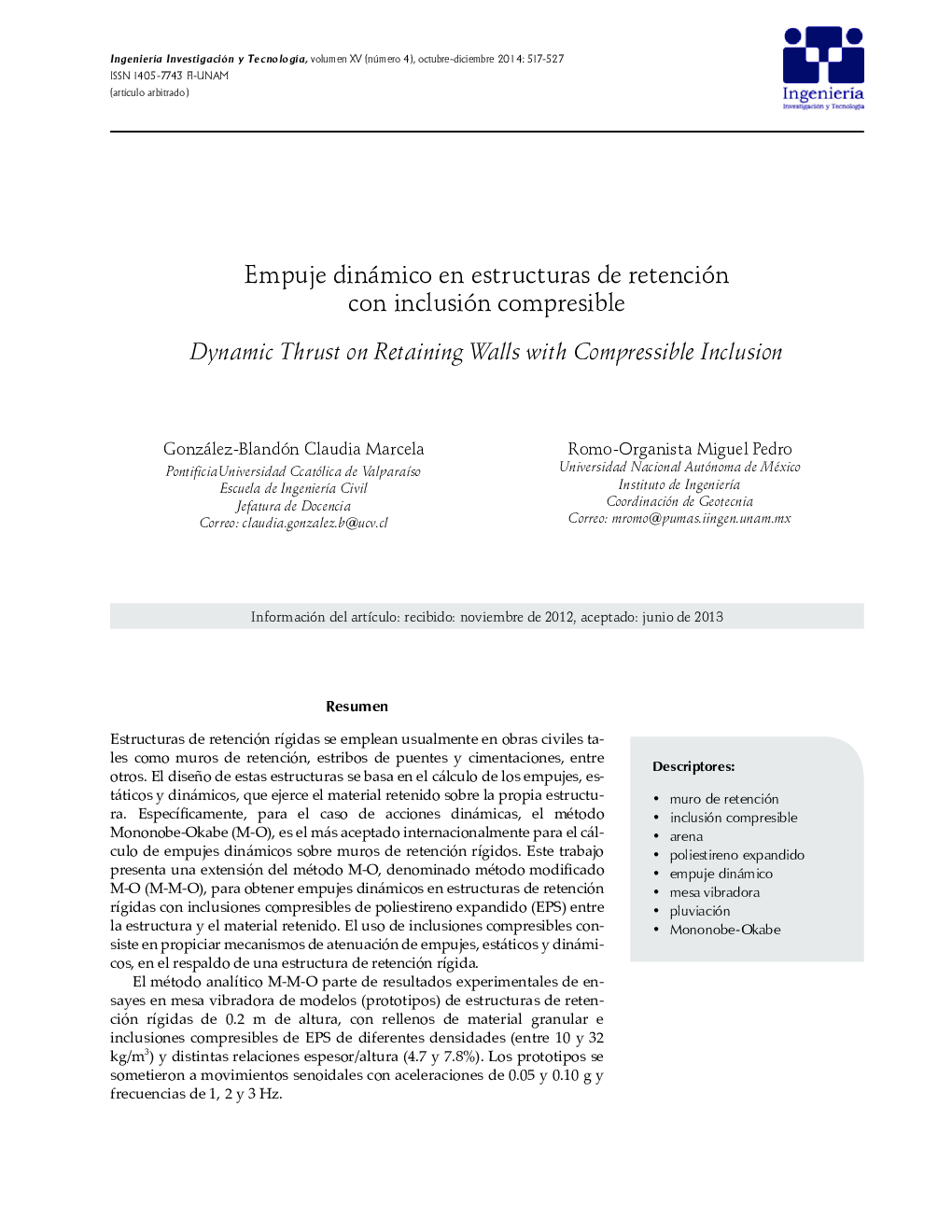| Article ID | Journal | Published Year | Pages | File Type |
|---|---|---|---|---|
| 274957 | Ingeniera, Investigacin y Tecnologa | 2014 | 11 Pages |
ResumenEstructuras de retención rígidas se emplean usualmente en obras civiles tales como muros de retención, estribos de puentes y cimentaciones, entre otros. El diseño de estas estructuras se basa en el cálculo de los empujes, estáticos y dinámicos, que ejerce el material retenido sobre la propia estructura. Específicamente, para el caso de acciones dinámicas, el método Mononobe-Okabe (M-O), es el más aceptado internacionalmente para el cálculo de empujes dinámicos sobre muros de retención rígidos. Este trabajo presenta una extensión del método M-O, denominado método modificado M-O (M-M-O), para obtener empujes dinámicos en estructuras de retención rígidas con inclusiones compresibles de poliestireno expandido (EPS) entre la estructura y el material retenido. El uso de inclusiones compresibles consiste en propiciar mecanismos de atenuación de empujes, estáticos y dinámicos, en el respaldo de una estructura de retención rígida.El método analítico M-M-O parte de resultados experimentales de ensayes en mesa vibradora de modelos (prototipos) de estructuras de retención rígidas de 0.2 m de altura, con rellenos de material granular e inclusiones compresibles de EPS de diferentes densidades (entre 10 y 32 kg/m3) y distintas relaciones espesor/altura (4.7 y 7.8%). Los prototipos se sometieron a movimientos senoidales con aceleraciones de 0.05 y 0.10 g y frecuencias de 1, 2 y 3 Hz.
Usually rigid retaining structures are used in civil works such as retaining walls, bridge abutments and foundations, among others. The design of these structures is based on thrust calculation, static and dynamic, exerted by the material retained on the structure. In the case of dynamic actions, internationally the Mononobe-Okabe (M-O) method is the most accepted for the calculation of dynamic thrusts. This paper presents an extension of M-O method, called M-O modified method (M-M-O), to obtain dynamic thrusts on nonyielding rigid retaining walls with a compressible inclusion of expanded polystyrene (EPS), between the structure and the retained material. Compressible inclusions provide thrust attenuation, static and dynamic, on the back of a nonyielding rigid retaining structure. The analytic method M-M-O is based on experimental results from shaking table tests of rigid retaining walls models 0.2 m in height with sand backfill and Expanded Polystyrene compressible inclusions of different densities (between 10 and 32 kg/m3) and variable thickness/height relation (4.7 and 7.8%). Sine wave-type motions with maximum accelerations of 0.05 and 0.10 g and frequencies of 1, 2 and 3 Hz were applied to the models.
